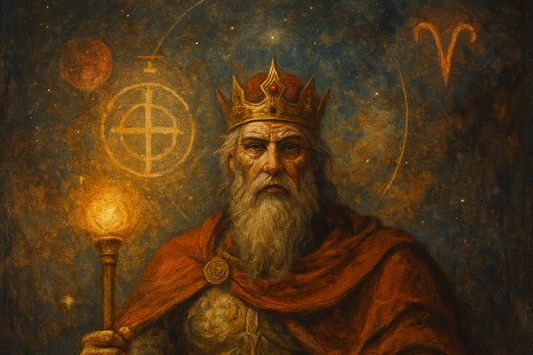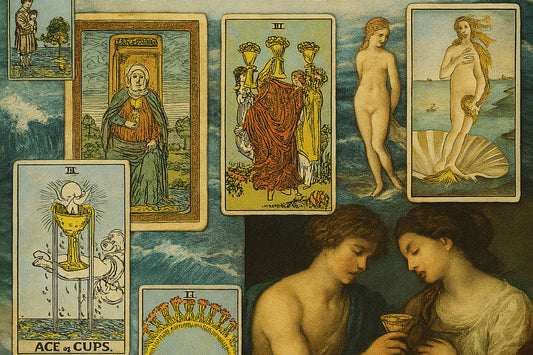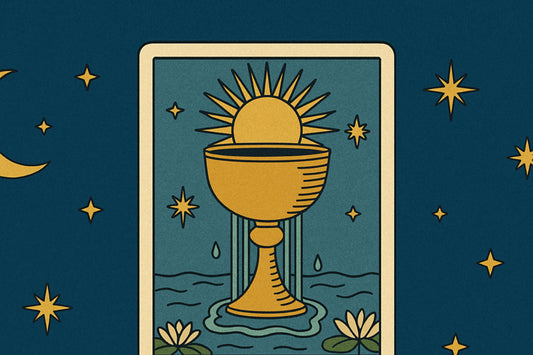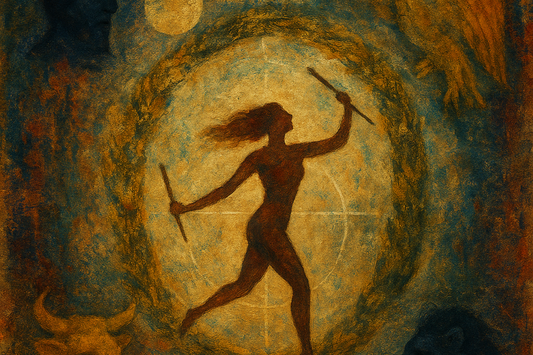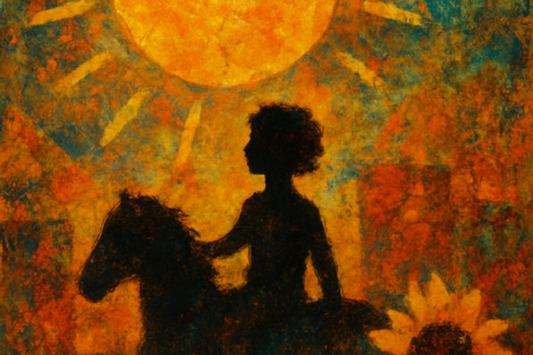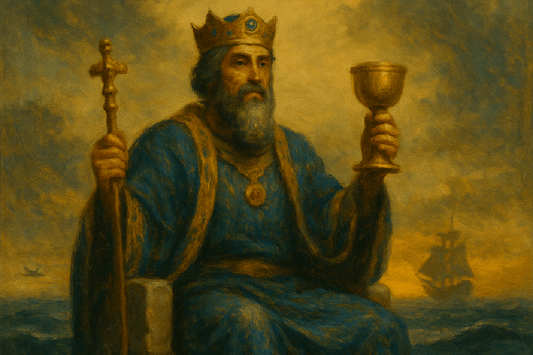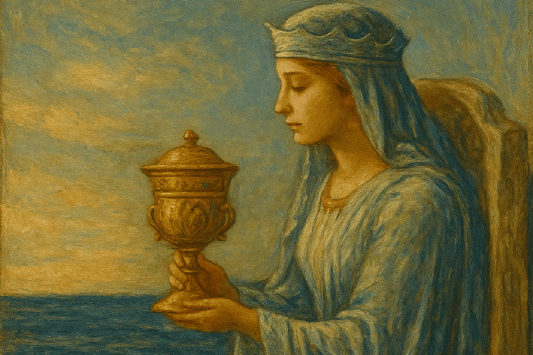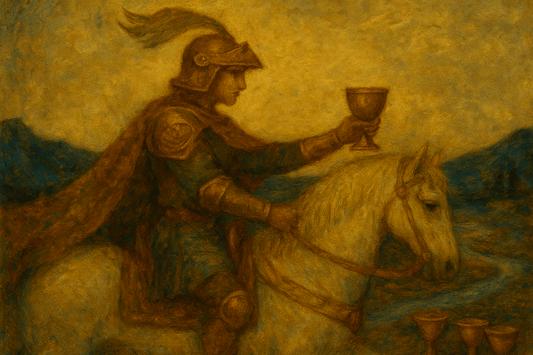Death in Tarot: Transformation, Endings and the Sacred Art of Release
Tarot AccessoriesTable of Contents
- TL;DR: Death Quick Reference
- The Archetype of Death in the Tarot
- Symbolism and Imagery of Death
- Meaning of Death in a Tarot Reading
- Reversed Meaning of Death in a Tarot Reading
- The Evolution of Death Throughout History
- Numerology and the Number Thirteen in Tarot
- Astrological Resonance of Death
- FAQs About Death in Tarot

TL;DR: Death Quick Reference
Upright: Transformation, endings, letting go, rebirth, deep release, necessary change, surrender, clearing space, ego death, life cycles
Reversed: Resistance to change, fear of endings, clinging to old identities, delayed transformation, emotional stagnation, unprocessed grief
The Archetype of Death in the Tarot
Death is not darkness. It is transition. It is the card of the threshold, where what no longer serves is surrendered - and something new is allowed to emerge.
This archetype is not about finality - it is about movement. The old dies so the new can live. The cocoon dissolves so the wings can unfold.
On The Fool’s journey, Death marks the great disidentification - the moment when the ego can no longer pretend to be in control. The masks fall. The identities crack. And beneath it all, something essential is revealed.
Death isn’t a punishment. It’s a truth. Everything changes. Nothing stays. And this card says: Let go, or be dragged.
Related Cards to Explore
The Hermit in Tarot: Solitude, Wisdom and the Light Within
Wheel of Fortune in Tarot: Fate, Turning Points and the Cycles of Becoming
Justice in Tarot: Truth, Balance and the Sword of Inner Law
The Hanged Man in Tarot: Surrender, Stillness and Letting Go
Symbolism and Imagery of Death
In the Rider-Waite-Smith deck, Death appears as a skeleton in black armour, riding a white horse - the colour of purity and spiritual force. The sun rises in the distance between two towers: a new dawn, always promised after the night.
Beneath the horse, figures fall: a bishop, a king, a child. All social roles - all status - are equal in the face of transformation.
A white rose blooms on Death’s black flag: the rose of rebirth. The five-petal flower is a symbol of life’s cycles, echoing Venus, beauty, and regeneration.
The message is clear: this is not annihilation. This is clearing.
Meaning of Death in a Tarot Reading
When Death appears upright, it signals a necessary ending. A shedding. Something must fall away - a belief, a pattern, a relationship, a version of self - so that something more true can rise.
This card often appears:
- During life transitions
- In moments of identity collapse
- At the end of a relationship, job, or phase
- When grief is initiating transformation
- When you’re being asked to stop resisting the inevitable
Death doesn’t hurt you. Clinging does.
It’s the card that whispers: what if this isn’t the end? What if this is the beginning - but only if you let it be?
Reversed Meaning of Death in a Tarot Reading
Reversed, Death suggests resistance to transformation. You may be holding on to something that is already dying - a story, an identity, a connection - out of fear of what’s next.
It may indicate:
- Fear of loss
- Emotional stagnation
- Delayed grief or integration
- Unwillingness to let go
- A cycle repeating because you won’t close it
Reversed Death says: You know this is over. But are you brave enough to let it be over?
The Evolution of Death Throughout History

Origins of the Archetype
The archetype of Death is eternal. From the underworld journeys of Inanna, Persephone, and Osiris to the myth of the Phoenix, death has always been linked to renewal.
Ancient mystery schools taught that symbolic death was essential for spiritual rebirth. Initiates were “buried” in caves or darkness, then re-emerged transformed.
Death was never the end - it was the passage.
Early Tarot Appearances - La Morte
In the earliest decks, like the Visconti di Modrone and Visconti-Sforza tarot decks, the card was often titled La Morte and depicted a skeleton with a scythe - sometimes without a name, to avoid religious controversy.

The figure mowed down bodies like crops - echoing the mythic Grim Reaper, but also symbolising harvest: what is ready to fall must be cleared for what will rise.
This wasn’t evil - it was essential.
Marseille Tarot - No Name, No Fear
In the Marseille deck, Death is often unnamed. Simply “Arcana XIII”. A figure with a scythe cuts down heads and limbs, but plants also grow from the earth - a stark but balanced image.
By removing the name, the card invites a direct encounter with mortality - not filtered through dogma or fear.
It says: this happens. To everything. What now?

French Occult Tradition - Oswald Wirth and the Death of Ego
Oswald Wirth preserved the skeletal figure but saw it as an agent of inner transformation - not physical death. He emphasized the scythe cutting through illusions, attachments, and egoic roles.
Death became not a destroyer, but a cleanser.

In the French Occult system, this card was an alchemical stage - the nigredo (the blackening). The point where the old self dissolves so that transmutation can begin.
Golden Dawn - Scorpio and the Alchemical Crisis
The Golden Dawn assigned Death to Scorpio, the sign of transformation, sexuality, mystery, and power. On the Tree of Life, it is Path 24 - between Tiphareth (soul) and Netzach (desire).
This is the point where the soul must confront the illusion of control. The will must surrender. The desire must die - or evolve.
Crowley associated this card with the “crisis of initiation.” The sacred moment where the seeker is broken open - and rebuilt.
Rider-Waite-Smith - Death as Sacred Force

In the RWS deck, Death is no longer terrifying. He rides calmly. He does not threaten - he insists. And behind him, the sun always rises.
Pamela Colman Smith gives us the most compassionate Death: one who strips away what’s false so that truth can return. A figure of cosmic law - not vengeance.
Waite explained that Death is “not the end but the gate”.
Modern Decks - Grief, Healing and Liberation
Today, Death is often reimagined as:
- The shadow worker
- The trauma healer
- The cycle breaker
- The force of truth that strips away illusion
Modern decks emphasise integration, rebirth, and emotional transformation. Some depict Death as feminine, queer, ancestor, or even lover - a being who meets you at the edge and asks: Are you ready to let it go?
Numerology and the Number Thirteen in Tarot
Thirteen is a sacred number - misunderstood, feared, and yet deeply initiatory.
In many traditions, it is the number of the Divine Feminine - the lunar cycle has thirteen phases. It represents the shift that breaks the known and births the unknown.
In Death, XIII becomes the number of sacred reversal. The structure collapses. The soul emerges.
It is not bad luck. It is deep medicine.
Astrological Resonance of Death
Death is ruled by Scorpio, a fixed water sign governed by Pluto and Mars. Scorpio is the alchemist - ruled by mystery, sexuality, transformation, and depth.
Pluto brings dissolution, power, and regeneration. Mars brings severing and will.
Together, they make Death a sacred initiator - the force that ends not to destroy, but to reveal.
Death is Scorpio’s lesson: if you let it die, it will set you free.
FAQs About Death in Tarot
What does Death mean in a love reading?
In love, Death signifies deep transformation. This may be the end of a relationship - or the end of an old dynamic within it. It’s not a threat - it’s an invitation: evolve, or release. Closeness may deepen after shedding false roles.
Is Death a yes or no card?
Death is neither. It says: this version of your question is dying. Ask again - from a new place. When Death appears, the old frame is ending. The real answer lives beyond it.
What does Death mean when reversed?
Reversed, Death signals resistance. You may be holding on to something out of fear, guilt, or attachment. The card says: this is already over. Will you grieve - or will you cling to the ghost?
What archetype does Death represent?
Death is the archetype of Sacred Ending. The cycle closer. The ego dissolver. The one who doesn’t destroy - but clears. Who doesn’t punish - but initiates. He walks with a scythe - but he’s not coming to kill you. He’s coming to free you.


